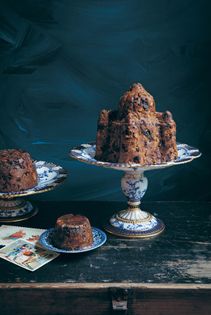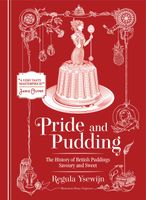Advertisement

Preparation info
- Makes
2
puddings using 16 cm 6¼ inch /No. 36) basins (moulds) - Difficulty
Medium
Appears in
Published 2016
Probably the most loved and internationally famed pudding of all is the plum pudding, or Christmas pudding. It has its roots in the ancient Roman and haggis-type puddings, but along the way it lost the meat and became a sweet dish. Originally boiled in skins, then in a cloth and later, when it became the fashion, in moulds, it has changed surprisingly little over the past 300 years.
There are a lot of legends and claims made about the origins of the plum pudding. Some say it evolved


